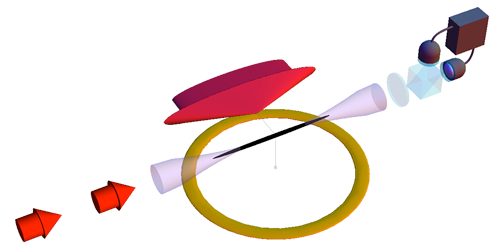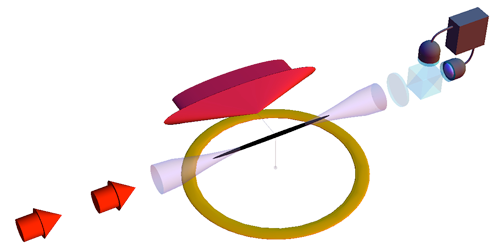Quantum Sensing of Magnetic Fields
Quantum entanglement can improve the sensitivity of a measurement, as has been demonstrated previously for atomic clocks and magnetic-field sensors. A new experiment with a cloud of cold atoms is able to measure a weak magnetic-field signal with a 25% reduction in experimental noise, thanks to entanglement of the atoms. The method involves a sequence of quantum nondemolition (QND) measurements, which track the effect of the magnetic signal on the atoms’ spins without destroying their quantum coherence. The advantage of this technique is that it can measure arbitrary field waveforms (sine wave, chirp, etc.), which might allow it to pinpoint the magnetic signal coming from the firing of a single neuron.
In their experiment, Martin Ciurana from The Institute of Photonic Sciences (ICFO), Spain, and his colleagues start by trapping around a million rubidium atoms and chilling them to 16 microkelvin. A strong magnetic field polarizes the spins of the atoms, while at the same time a weaker, time-varying magnetic field—which is the signal to be detected—perturbs the spins in an orthogonal direction to the spin polarization. To probe the atoms, the team fires a laser pulse into the cloud and records a rotation in the light’s polarization. This qualifies as a QND measurement, as it provides information on the perturbed state without disturbing it. The pulse also entangles the atoms with each other. The researchers allow this entangled system to evolve for several hundred microseconds before performing a second QND measurement with a laser pulse. By combining the two measurements, the team measures the amplitude of the magnetic waveform at a level of sensitivity below the standard quantum limit set by quantum noise in the measurements.
This research is published in Physical Review Letters.
–Michael Schirber
Michael Schirber is a Corresponding Editor for Physics based in Lyon, France.





